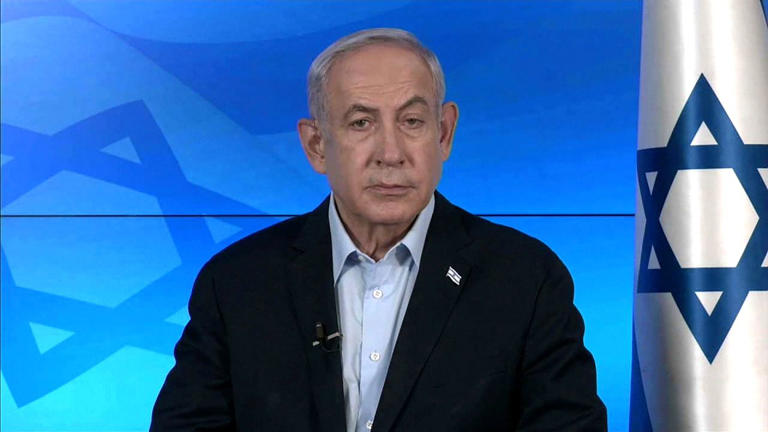THE FOREVER WAR IN GAZA: A HUMANITARIAN AND POLITICAL NIGHTMARE
Introduction
The ongoing conflict in Gaza has once again erupted into a devastating humanitarian crisis, deeply rooted in decades of political tensions and failed diplomacy. Recent developments during former U.S. President Donald Trump’s Middle East visit have added new dimensions to the crisis. As Israel intensifies its military campaign under the guise of “destroying Hamas once and for all,” the region is witnessing unprecedented levels of destruction, displacement, and international condemnation.
Trump’s Middle East Diplomacy and Israel’s Exclusion
During Trump’s recent visit to the Middle East, the former president made several moves that appeared to sideline Israel. From lifting sanctions on Syria and meeting with Syrian leaders to forging a ceasefire with the Houthis in Yemen and engaging directly with Hamas to free an American hostage, Trump’s actions deviated sharply from traditional U.S.-Israel policy coordination. Most notably, his willingness to enter nuclear negotiations with Iran—a staunch Israeli adversary—was perceived in Tel Aviv as a direct challenge to Israeli interests.
These actions have not only unsettled Israeli leadership but have also marked a shift in Washington’s diplomatic approach. Commentators like Kim Ghattas have observed that Trump was “cutting Israel out of the deals it is making,” leaving Prime Minister Netanyahu reduced to a mere spectator.
Israel’s Gideon’s Chariots Offensive
In response, Israel has launched what it calls the “Gideon’s Chariots” offensive, aiming to take control of all of Gaza and obliterate Hamas. The campaign targets both southern and northern Gaza, and is widely viewed as a strategy to push Palestinians out of the Strip permanently. Netanyahu’s long-standing ambition to displace Gaza’s population is now being enacted through brutal military force.
This military escalation has resulted in mass displacement, the collapse of humanitarian infrastructure, and mounting civilian casualties. Despite international pressure, including a warning from the White House that Netanyahu would be “on his own” if he continued the war, Israel has shown no signs of halting its aggression.
International Response and Condemnation
The world is watching in horror. United Nations Secretary-General António Guterres described the crisis as “beyond description, beyond atrocious, and beyond inhumane,” warning that the entire population of Gaza faces famine. Western allies such as France, the UK, and Canada have issued joint statements condemning Israel’s actions, even threatening sanctions and a review of trade relations.
Amnesty International’s statement underscored the global outrage: “It is outrageous and morally reprehensible that it took the world nearly 80 days of broadcast starvation and cruelty amidst genocide to exert enough pressure on Israel to even slightly ease its total siege.”
Humanitarian Crisis and Militarised Aid
Under intense international scrutiny, Israel has allowed minimal aid into Gaza. However, these efforts are widely considered insufficient. The new U.S.-backed plan to manage aid through centralized, militarized distribution centers has drawn sharp criticism. Managed by the Swiss-incorporated Gaza Humanitarian Foundation and protected by private contractors, the plan is seen as another form of displacement.
UN officials have refused to participate, condemning the militarisation of aid and accusing Israel of turning starvation into a bargaining chip. This method not only undermines the impartiality of humanitarian work but also exacerbates the suffering of displaced Palestinians.
Ceasefire Hopes and Political Deadlock
Talks to renew a ceasefire have stalled, largely due to Israel’s reluctance. Despite U.S. pressure, particularly from the Trump administration, Netanyahu remains committed to achieving what he calls “total victory” over Hamas. His unilateral decision to break the last ceasefire in March has further diminished hopes for a peaceful resolution.
Vice President J.D. Vance’s cancellation of his planned visit to Israel is seen as a signal of U.S. frustration, though diplomatic efforts continue. Without meaningful negotiations, the region is doomed to further cycles of violence and instability.
The Question of Trump’s Plan
A disturbing element in this conflict is the suggestion that Israel’s current actions may be part of a broader plan attributed to Donald Trump—a plan involving the permanent relocation of Gaza’s population to third countries. Israel’s far-right finance minister Bezalel Smotrich openly spoke about “destroying everything that’s left of the Gaza Strip” and pushing the population out.
Whether this is indeed Trump’s plan or a misappropriation of his ideas remains unclear. However, it is vital for Washington to clarify its stance. If such a plan is being implemented with U.S. approval, it undermines any claims of America being a force for peace. If not, disowning the policy could pressure Israel into reevaluating its actions.
Conclusion
The situation in Gaza is a tragic embodiment of failed diplomacy, unchecked military aggression, and a collapsing humanitarian system. While Trump’s approach to Middle East politics may have shifted alliances, it has not achieved the lasting peace it seemed to promise. Israel’s relentless offensive, underpinned by plans like Gideon’s Chariots and possible forced relocations, only deepens the wounds of a long-suffering population.
It is time for the international community—including the U.S.—to take a firm, principled stand. Real peace will not come from sidelining key players or militarising aid, but from addressing the root causes of the conflict, ending occupation, and respecting human rights.
Internal Linking Suggestion: For further analysis on how military conflict impacts humanitarian law, read our post: “The Weaponization of Aid in Modern Warfare” on remedytalks.com.
